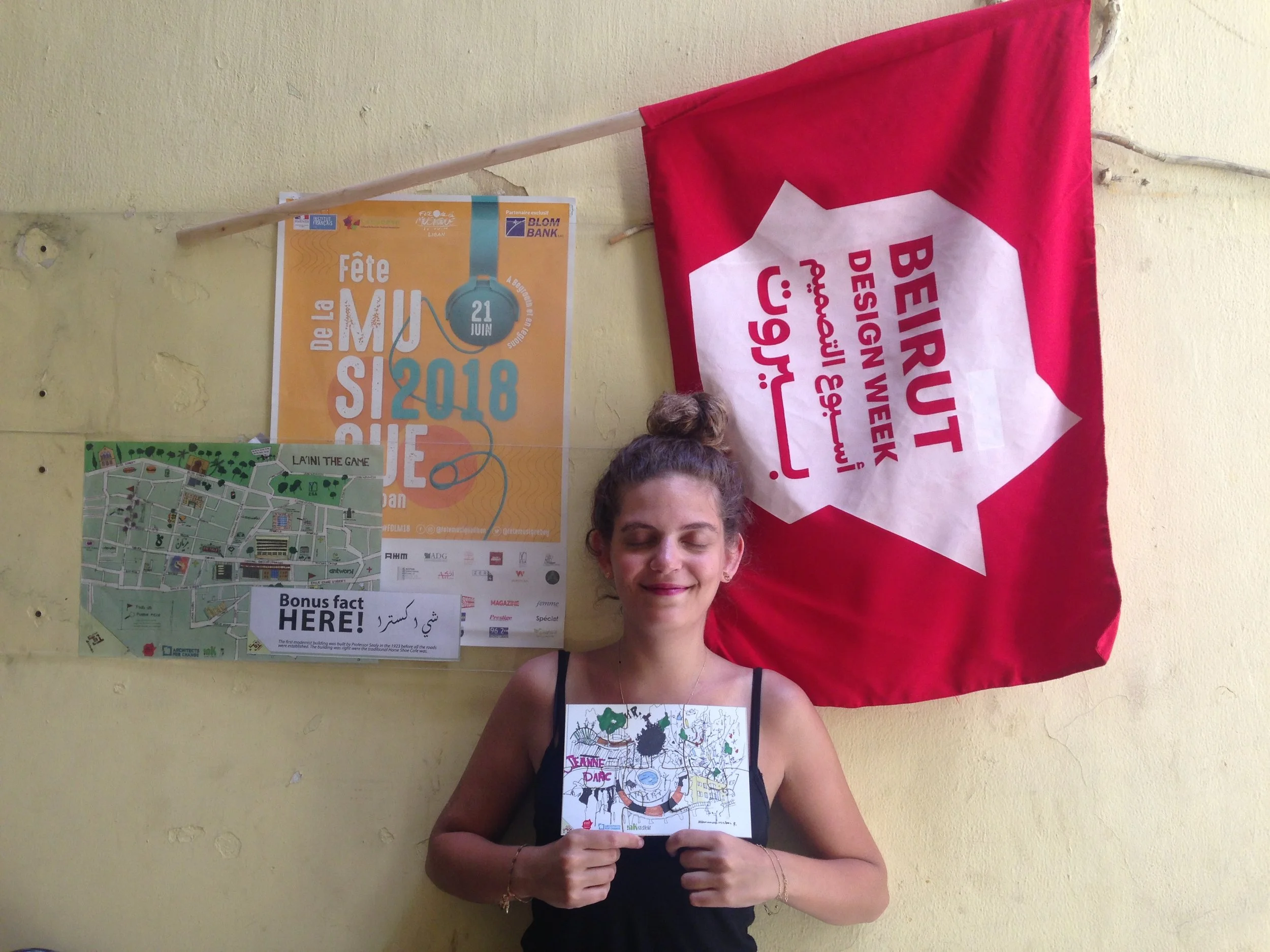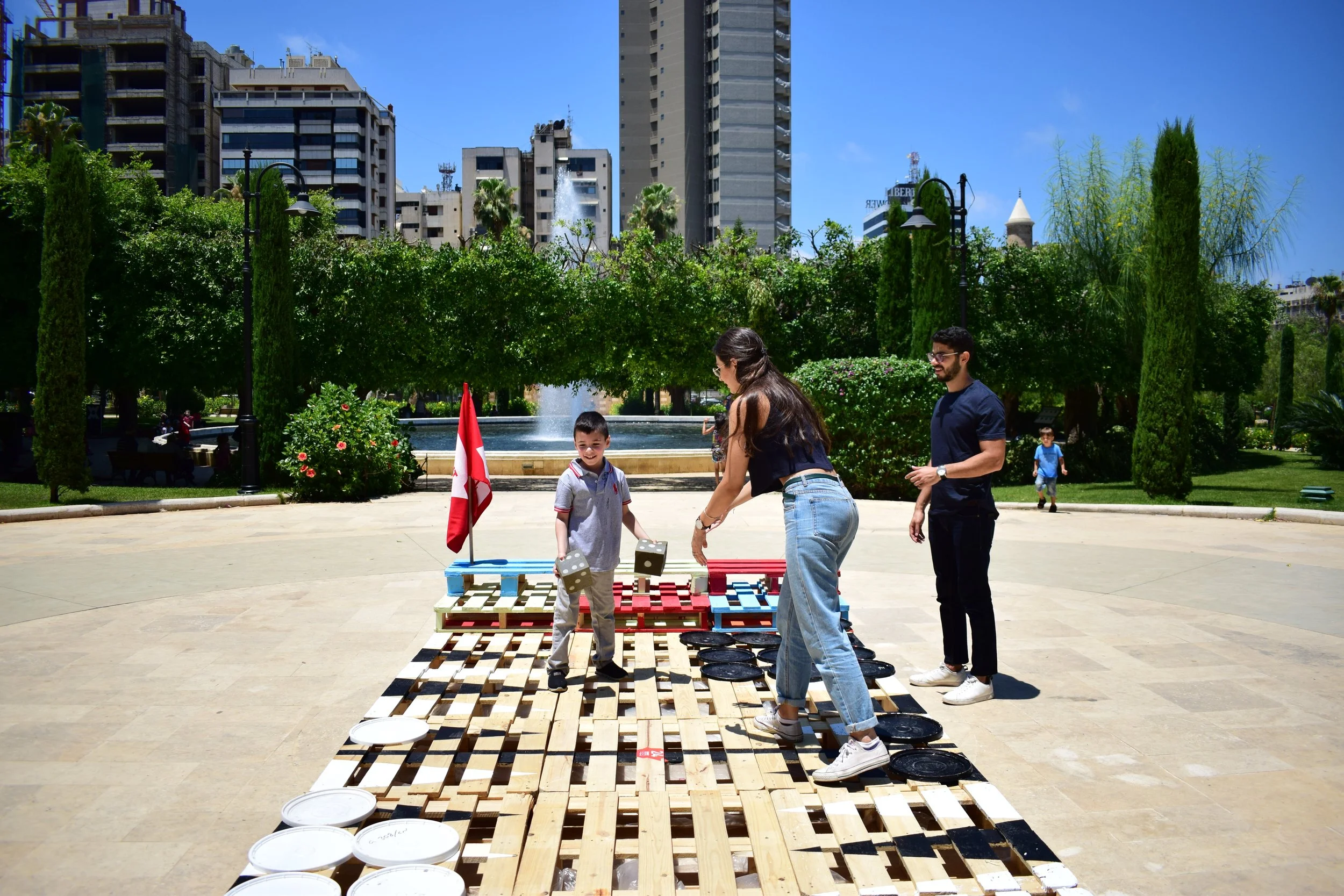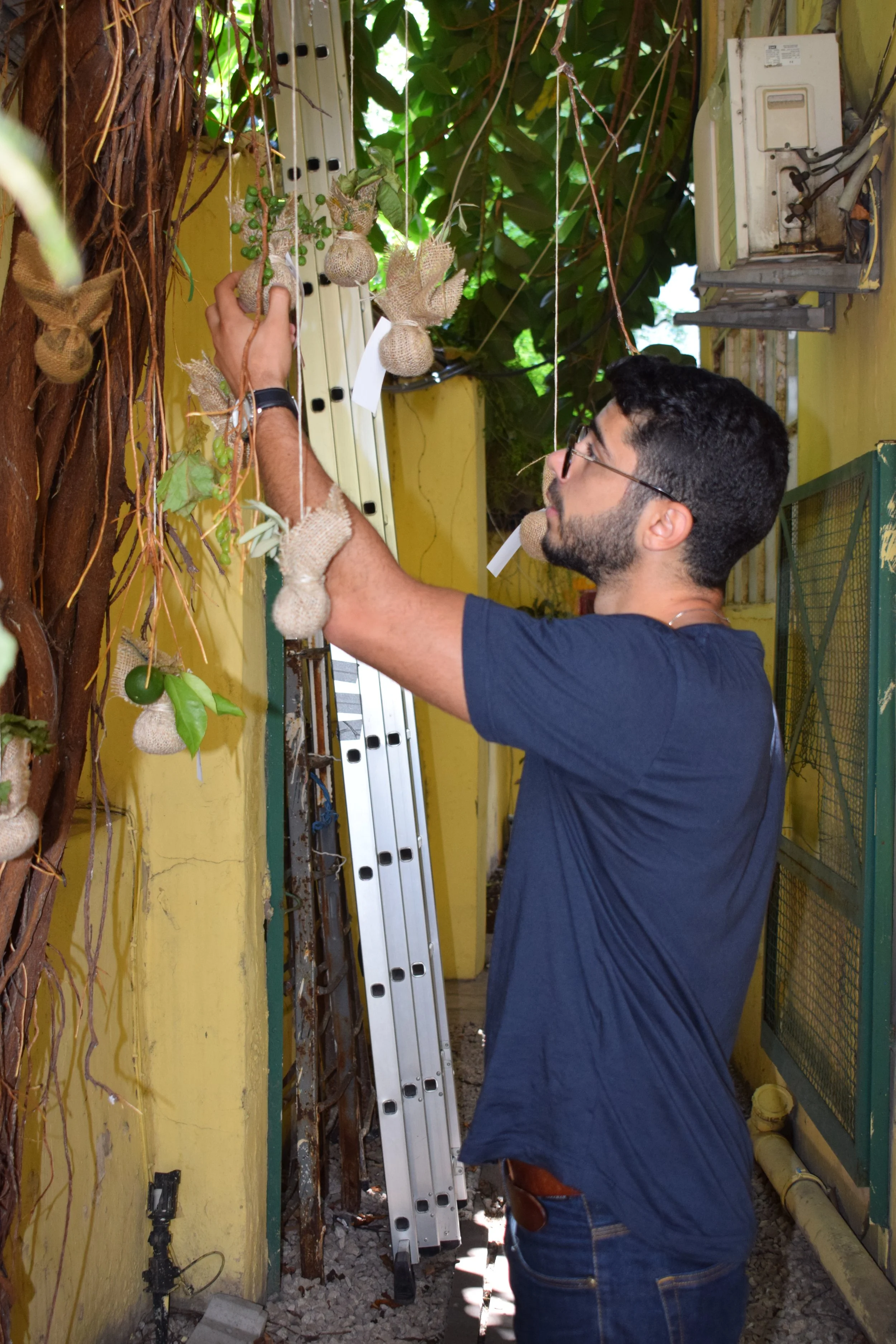Playing with the City
Public Interventions
Beirut, Lebanon
Role: Curator
June, 2018
Beirut is a complex city that gives a lot and deprives a lot. A complicated urban fabric that holds a rich collective memory but lacks a way to live it. The city needed an intervention, an active and a spontaneous one. The city needed to play! We invited people to experience the city as a playground through an urban game and three public installations.
La’ini (meet me) is an urban quest and a rally paper, inviting people to interact and engage with the neighborhood of Hamra in a fun and dynamic approach while exploring the different public installations: Ripple, Tawle, and Fading Memory.
Credits — Architects for Change (2018)
Tawle
Tawle (طاولة) is in an invitation for people of all ages, races, and social classes to come together and play in one of Beirut’s main public parks. Tawle — an installation is inspired by Tawla the game, also known as the backgammon, a traditional Middle Eastern game, very common to Lebanese people. It is found in the home of every Lebanese family, gathering neighbors and friends in one space, and bringing both the community and culture together. With TAWLE, we aimed to raise awareness of our right to play in the city, our right to access public spaces, and our right to engage with the people in our community.
Fading Memory
Fighting to achieve a brighter vision, Beirut continued to develop in a way that disrupts the authenticity of Lebanon. The boom of gentrification is affecting the urban development of the city and its architecture, causing harm to the history, the culture, and the heritage of its places. Regardless of this harm, some places are still fighting to stay. Zico House, built in 1935, is an ideal proof of this narrative. As a case ofadaptive reuse, it has passed from its original residential state to serve the city as a vibrant multifunctional cultural space for creatives. Fading Memory explores the story of a young boy recalling and reminiscing his house and his city, inviting passersby on a journey of reflection upon the existing, volatile, and forgotten memories of our city.
Ripple
Ripple came as a direct response to the staggering amount of paper waste produced by architecture students. The installation was born through self-accountability by realizing what a discarded paper tube meant. Ripple is generated by individually slicing 600 paper tubes which were gathered on a slim period of 3 months from various print labs in and around our universities. Each of these tubes, throughout their lifespan, has held 50 meters by 1 meter of paper in width and length which totals to 30000 m2 which translates to 3.6 tonnes of wasted paper used to showcase works which have had no permanence. Ripple is a wake-up call to re-think and re-evaluate our pointless consumption of paper in this digital age. The statistics on this problem are alarming, however, no one is sounding any alarm bells. The payoff for us is the fact that our creation has now taken a physical space in the world and it has a permanence which will most likely outlast this exhibition. And it’s not vulnerable either, unlike its core element, the paper tube, a quasi-object having no substantial meaning, however, if combined with a reason to change and a wise and sensible mind, this vague element can now have a purpose and bring a message through, a message of change.
Credits:
Fading Memory: Ghada Cheikh, Cedric Akl, Dana Lamaa, Hanaa Ismail, Nour Awarki, & Zeinab Awada
Ripple: Noor Tabet, Nour Assaf, Shant Chilingirian, Emma Gemayel, & Julien Harfouche.
Tawle: Serge el Khoury, Lama Siblini, Joana Abou Ali, Nour Chehabeldeen, Sahar Sacre, & Carlie Bared.








